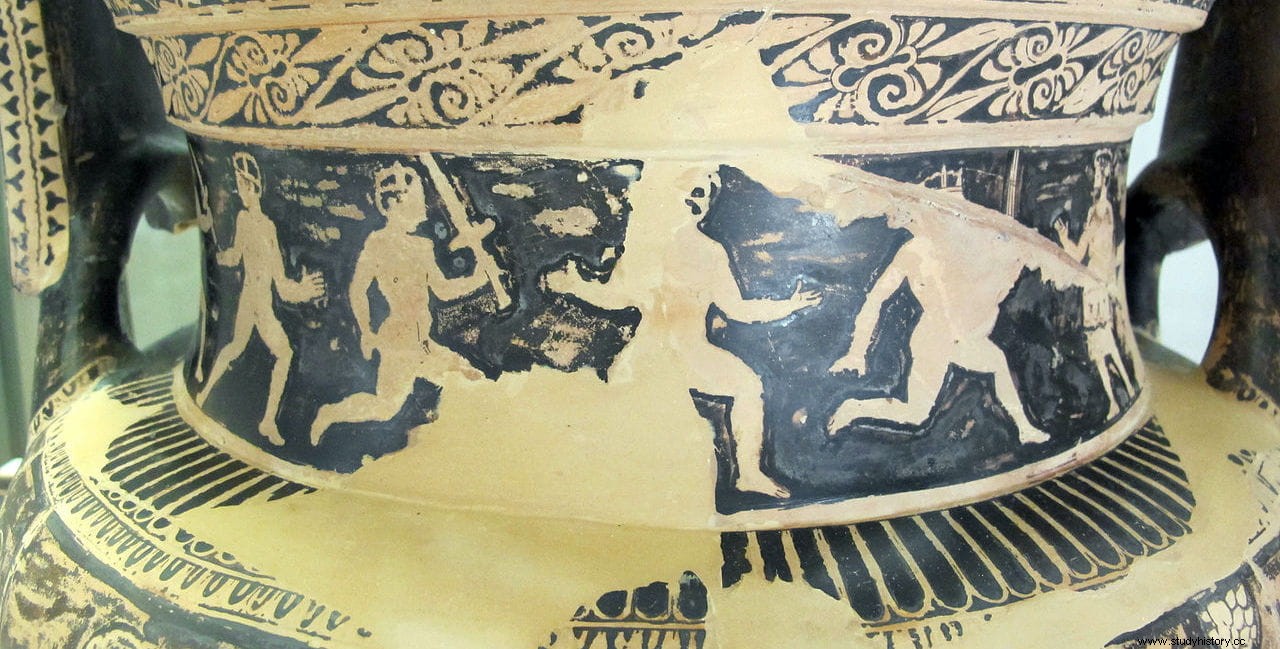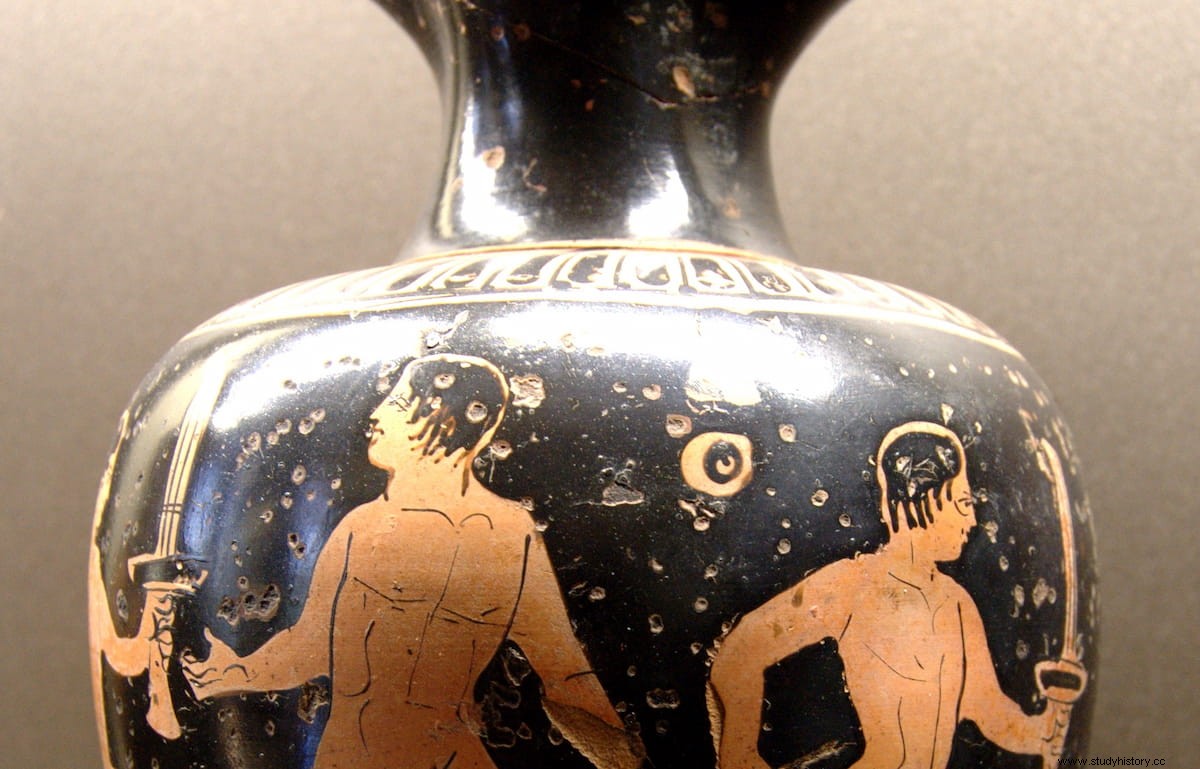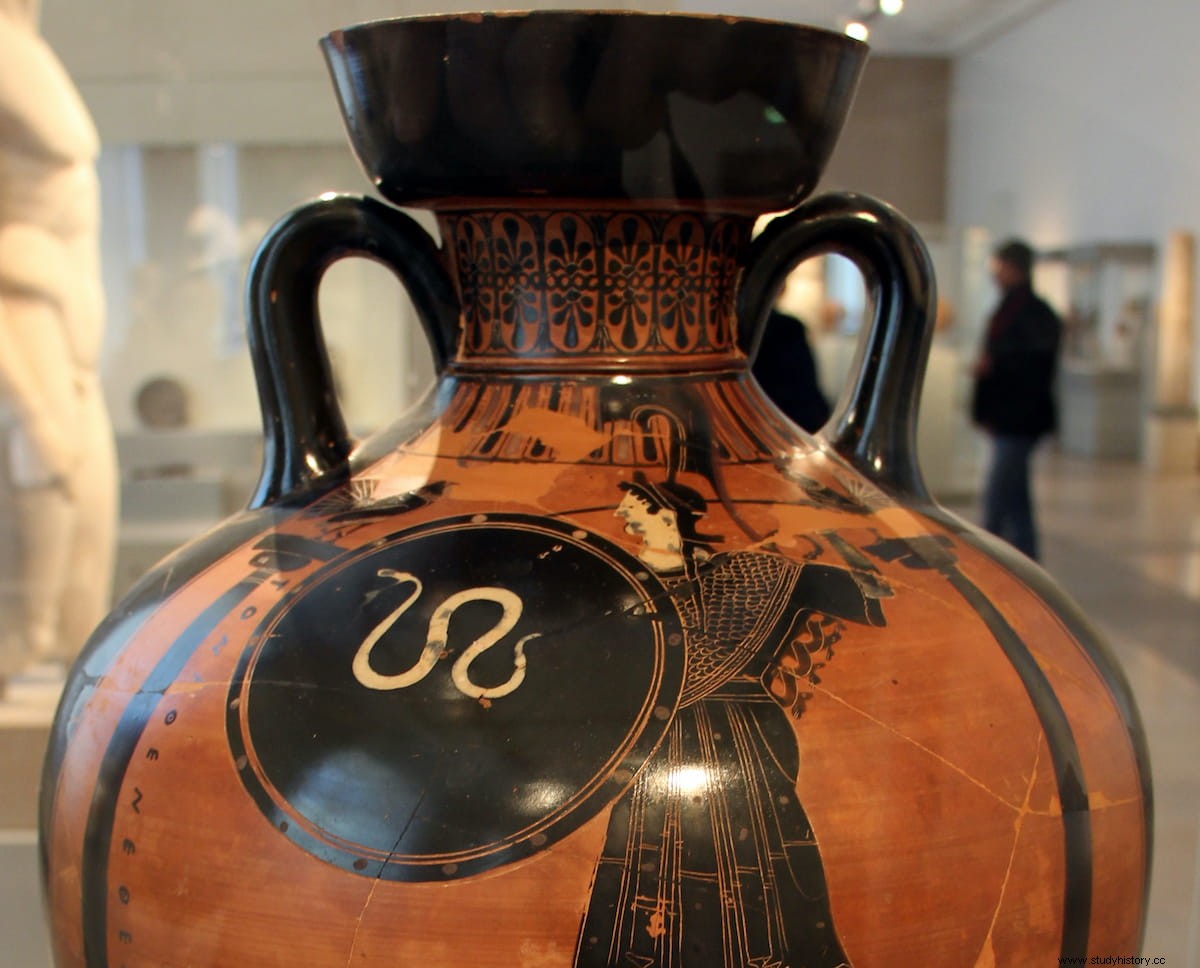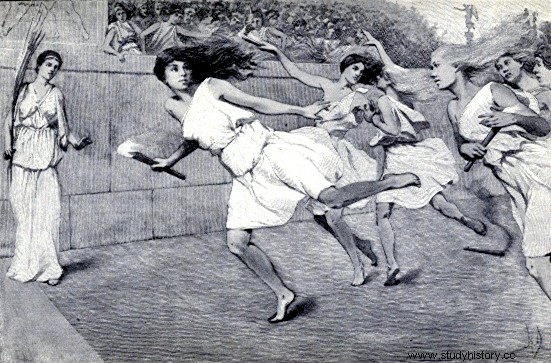Ancient Athens was famous in the Mediterranean world for many things, such as its culture and democracy, but also for its festivals. Towards the end of the 5th century B.C. the city had about 120 public holidays a year, which gives an average of one festival every three days.
That is why the author of the Constitution of the Athenians (called Pseudo Xenophon, because it was originally attributed to him), written around 440–420 BC, complains that Athens celebrates more festivals than any other Greek city.

The largest and most important of all these festivals was the Panathenaic festival, a religious, artistic and sporting festival in honor of the city's patron goddess, Athena. They took place over two days (every four years there was a special four-day edition) in the first month of the Attic calendar, the Hecatombeon (late July-early August).
Its main acts were the famous procession from the Ceramic to the Acropolis to carry the newly woven peplo of the goddess, and the offerings that were made at the altar in front of the Parthenon. But there were also sports competitions and even a male beauty pageant, the evandria .

Among the sports events was the lampadedromia or lampadephoria , a curious torch relay race reserved only for Attic citizens, which also used to be held on the occasion of other festivities, such as the Prometheas (in honor of Prometheus) and the Hephaestias (in honor of Hephaestus). All of them, therefore, linked to divinities associated with the cult of fire.
It was a competition between the ten Attic tribes (formed in the reforms of Cleisthenes), although it seems that only 5 tribes participated in each race. Each tribe appointed a gymnasiarch that he had to select 40 runners and train them at his own expense (we already discussed this type of tax in our antidose article).

Torches were lit at the altar of Prometheus at the Academy, a mile outside the city. Then the race began in the Ceramic cemetery, next to the walls, from where the start was given by throwing a torch from a tower as a signal, as Aristophanes tells.
The first runners from each tribe took the start and ran approximately 25 meters to deliver the torch to the next runner. Thus, one after another the relievers covered the same approximate distance, trying not to let the torch go out. The race ran through the Dipylon gate, crossed the Pompeion and the Agora along the Panathenaic route and ended at the Acropolis. The total distance of the race, according to sources, was about six furlongs (just over a kilometer).

Victory was awarded to the tribe whose runner entered the finish line first with the torch lit. It was not an individual victory but a collective one, just like in relay races in modern athletics. Pausanias, however, indicates that the race started from the Academy, so it is possible that the starting point was not fixed, that there were several depending on the festival or period of the year, or that at a given moment it was changed.
The victors received oil from the sacred olive trees of Athena, in Panathenaic amphorae decorated with the image of Athena Prómacos (the one who fights in the front line ) and the representation of the contest in which the victory had been obtained, a lampedromia. The tribes used to thank the gymnasiarch winner the economic effort made, granting him a crown or a dedication monument.
Some believe that Carl Diem was inspired by these races when he introduced relays to the 1936 Olympic Games to carry the Olympic flame to the host city, Berlin that year. Thus, on June 30, 1936, the Olympic torch was lit for the first time in Olympia, a ceremony repeated in all subsequent Olympic Games.

Lampedromías evolved over time and thus, in Plato's time, torch races were run for the first time on horseback. In the description of Pausanias, which already corresponds to Roman times, it is observed that the relays are absent, which could indicate that it was already an individual race and not a collective one. It is also known that there were lampadedromias of women and children.
In addition to Athens, the lampedromias were developed in many other places in Greece and Magna Graecia, southern Italy and Sicily, and were always a characteristically Greek cultural event, the Romans never practiced them. Today the city of Naples has revived the tradition, holding a lampedromia (torch relay half marathon) at the end of June.
